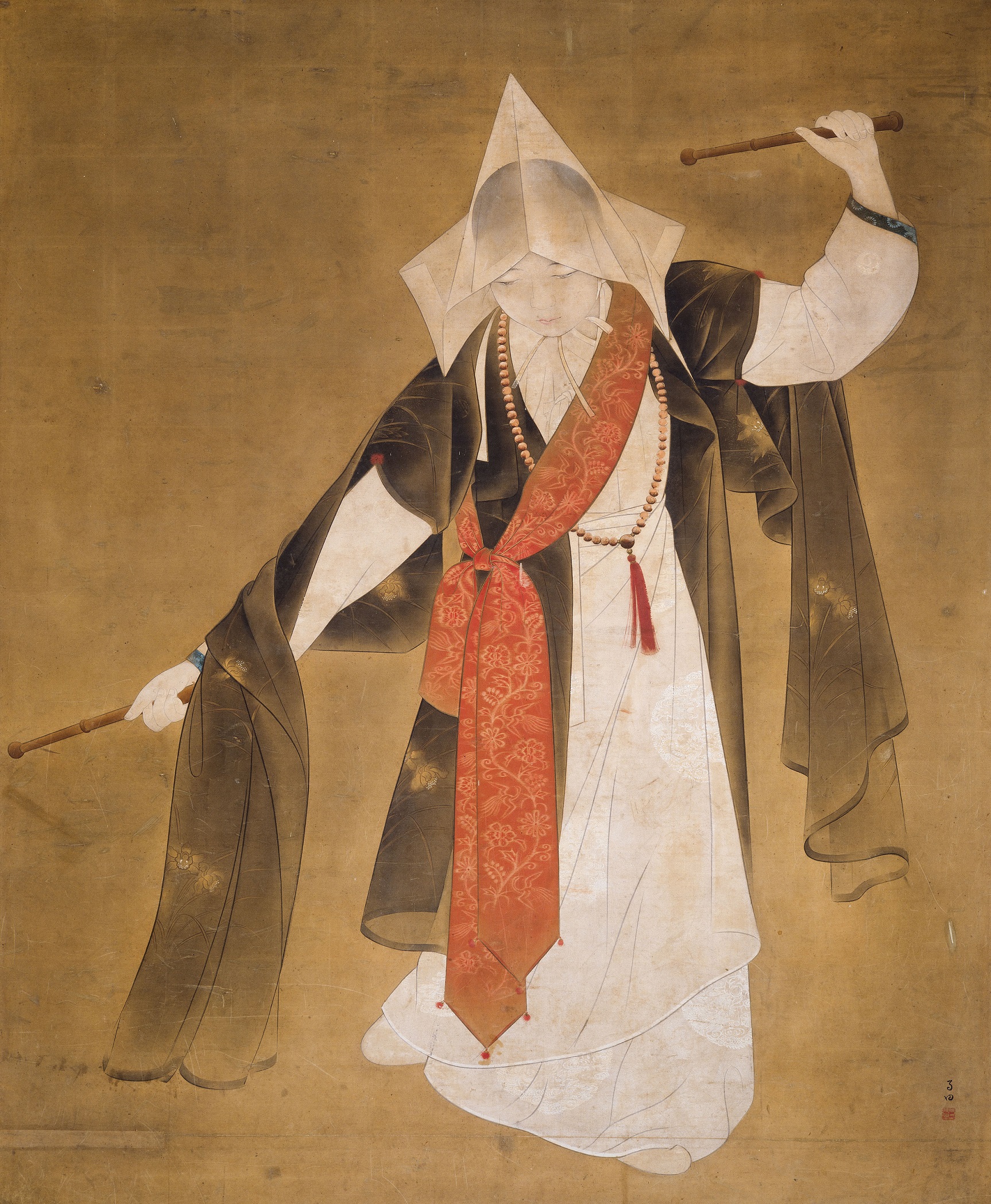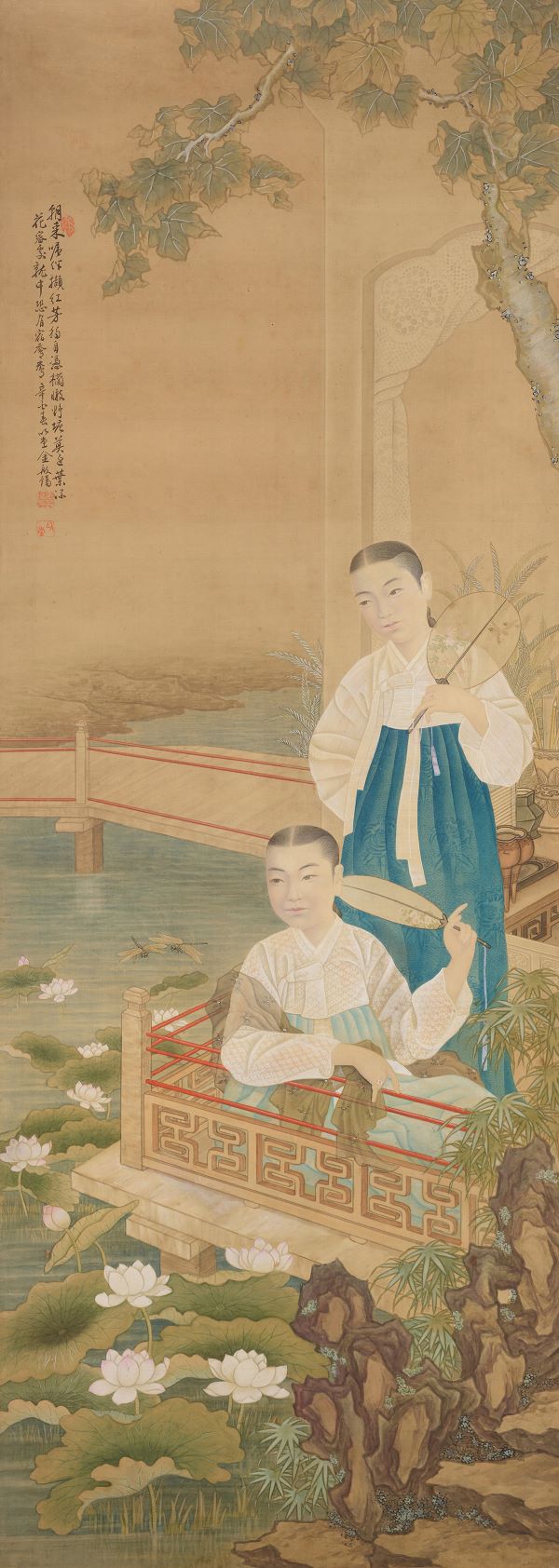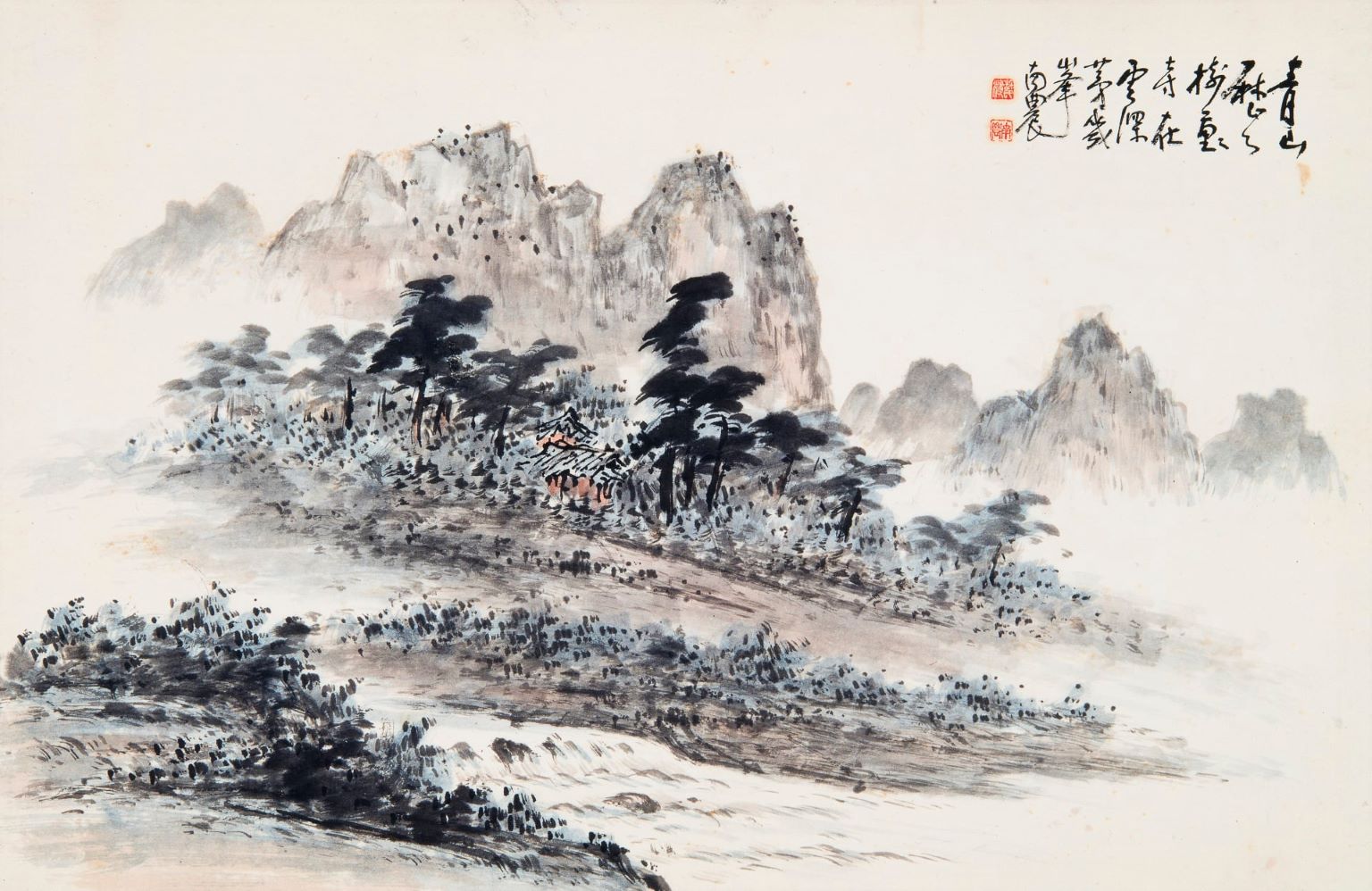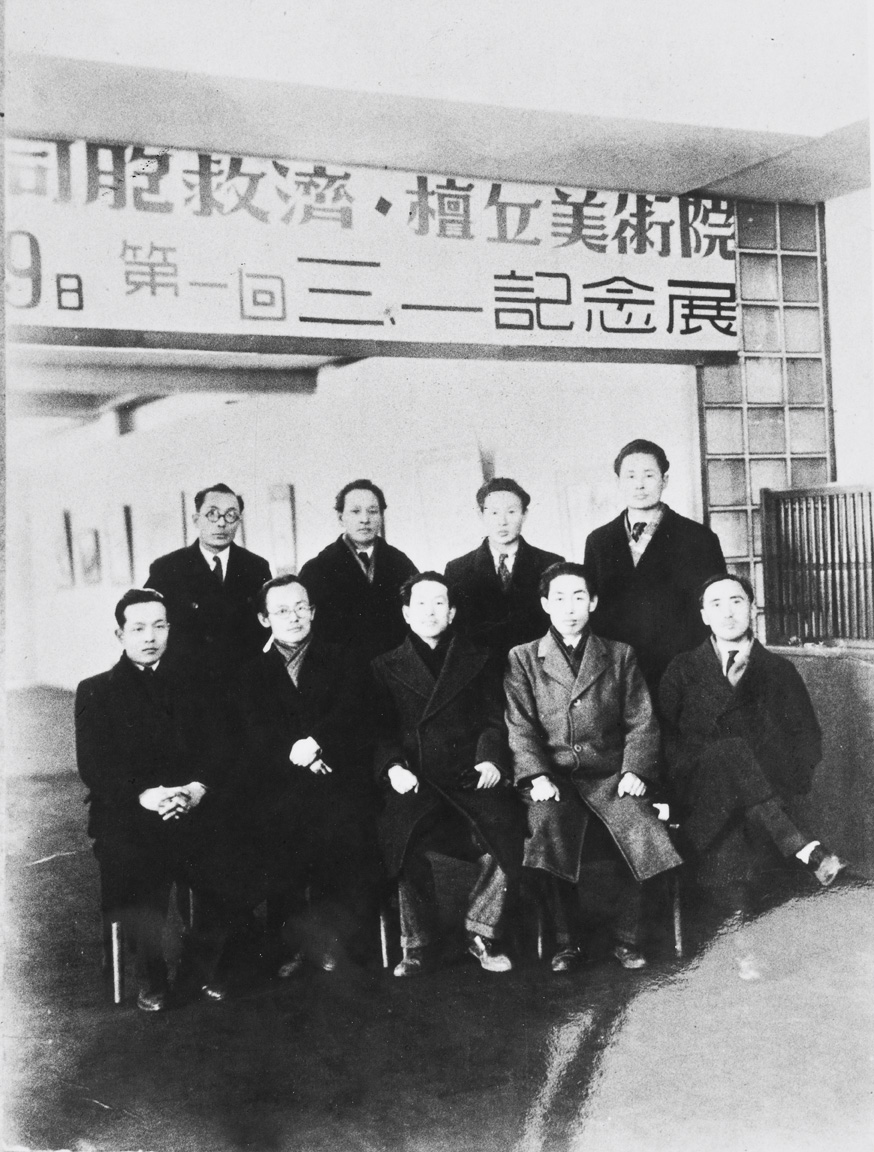
Chang Woosoung, Buddhist Dance, 1937, Ink and color on silk, 198×161cm. MMCA collection
Chang Woosoung
* Source: Multilingual Glossary of Korean Art. Korea Arts Management Service
Related
-

Kim Eunho
Kim Eunho (1892-1979, pen name Yidang) joined the Calligraphy and Painting Society (Seohwa misulhoe) in 1912 and learned Oriental painting under An Jungsik and Cho Seokjin. He was known for his sophisticated brush strokes and attention to detail. Early in his career he was appointed as a court portrait painter. He produced several portraits of kings from the Joseon dynasty and gained a reputation for his portraits and colored figure paintings. He contributed his works to the first exhibition of the Calligraphy and Painting Association (Seohwa hyeophoe) and the Joseon Art Exhibition. His trainees organized Husohoe in 1936, which contributed enormously to the Modern Oriental Art community in Korea. However, he was accused of pro-Japanese activities due to his overt acquiescence to Japanese Imperialism and his involvement in its wartime propaganda. He tried his hand at ink paintings in the 1950s and experimented with modernized colored landscape painting from the 1960s into his later years. In the 1960s, he painted several portraits of historic figures and published Hwadanilgyeong (1968) and Seohwabaeknyeon (1977).
-

Eastern painting
Eastern painting (dongyanghwa) refers to the overall body of works created using traditional East Asian materials and methods, in contrast to Western painting. In Korea, Byeon Yeongro’s essay “On Eastern Painting” published in Dong-A Ilbo on 7th, July, 1920 was the first use of the term. The term then began to be used in Japan first to distinguish Oriental style paintings from Western ones. Until the late Joseon era, both calligraphy and painting were categorized under the term seohwa, but during the Japanese occupation of Korea in 1922, the first Joseon Art Exhibition [Joseon misul jeollamhoe] divided the painting section into Western and Eastern styles. Thereafter, the term Eastern-style painting entered official use in the country. After independence, the National Art Exhibition (Gukjeon) continued to use the term “Eastern painting,” but since 1970, numerous arguments were made to replace it with "Korean painting," because the term was imposed unilaterally during the Japanese colonial era.
-

hangukhwa
A type of painting created during the 20th century that uses traditional Korean materials, techniques, and styles. The term emerged from the criticism that traditional-style paintings were called Eastern paintings in Korea, in contrast to China, where they were called national-style paintings, and Japan, where they were called Japanese-style paintings. The term hangukhwa (Korean Painting) entered official use following the overhaul of the educational curriculum in December 1981, and the appearance of the term Korean painting, with the subcategories ink wash painting [sumukhwa] and ink and light-colored painting [damchaehwa] were listed in art textbooks from 1983. The Grand Art Exhibition of Korea also began using the term hangukhwa (Korean Painting), as opposed to Eastern painting, in 1982. Prior to this, Hankukhwahui (Korean Painter’s Association) was used as a collective term for such Korean painters in 1964 and Kim Youngki (pen name Chunggang) argued to use the term Korean painting to define national identity in his essay “On hangukhwa (Korean Painting) and Criticism.” Criticism that Korean paintings, unlike the national paintings of China and Japan, do not have a narrative theme, and that the use of such a term was contrary to contemporary artistic trends, resulted in the term “hangukhwa (Korean Painting)” failing to achieve mainstream use. Hangukhwa (Korean Painting) is currently used interchangeably with the term Eastern painting.
Find More
-

Ahn Sangchul
Ahn Sangchul (1927-1993, pen name Yeonjeong) is a painter who pioneered the expressive realm of Korean painting with his experimental work. He graduated from the Department of Painting at Seoul National University. In 1953, his last year of university, Ahn received an honorable mention for his Late Autumn at the Second National Art Exhibition (Gukjeon). His Field and Transquility won the Minister of Education Award in 1956 and 1957, respectively. Moreover, his The Remaining Snow and Clear Day earned him a Vice-Presidential Award and a Presidential Award in 1958 and 1959, respectively. Ahn learned traditional landscape painting from Noh Soohyun, Chang Woosoung, and Bae Ryeom at the university. However, his bold compositions and his drastic wielding of ink and brush in combination with Western visual principles brought attention to his Eastern-style paintings that broke away from traditional paintings. Ahn sought the modernization of Eastern painting by actively embracing Art Informel pursued by Korean painting circles in the 1950s. From the 1960s onward, he produced abstract paintings, such as Full of Charming Dreams (1960) and Mong Mong Chun (Spring in hazy dreams) (1961). Later, he continued to experiment with objets and materials like stone or kraft paper and released the three-dimensional, abstract Spirit series that transcended the flatness of painting. He served as a judge for Gukjeon and a member and chairman of its operating committee. He was the youngest Gukjeon judge. He also worked as a professor at the Seorabeol University of Arts and Sungshin Women’s University.
-

Department of Art at Hongik University
Established in 1949, the Department of Art at Hongik University consists of one art theory department and eleven practice-based departments, including painting, Oriental painting, printmaking, sculpture, woodworking and furniture design, metal art and design, ceramics and glass, textile art and fashion design, visual communication design, and industrial design. In 1955, it moved from Jongro-gu, Seoul to the current location in Sangsu-dong, Mapo-gu, Seoul. The history of the College of Fine Arts can be largely divided into the period of the Department of Fine Arts from 1949 through 1953, the period of the School of Fine Arts from 1954 through 1971, and the period of the College of Fine Arts from 1972 until now. In March 1953, the Department of Fine Arts produced the first six graduates, and in the following year the School of Fine Arts with three departments was established. In December 1971, it was upgraded to a college, which exists up to the present. Several exhibitions organized by its graduates are notable, including the Four Artists Exhibition held in 1956 as the first anti-National Art Exhibition (Daehanminguk misul jeollamhoe or Gukjeon) by the third and fourth classes of graduates and the Union Exhibition of Korean Young Artists held in 1967 by graduates from the 1960s as an effort to realize experimental art.
-

Dangu Art Academy
A Seoul-based art institute formed directly after national independence in 1945, by Lee Ungno, Chang Woosoung, Lee Yootae, Bae Ryeom, Kim Youngki, Cho Joonghyun, Jeong Honggeo, Chung Chincheol, and Cho Yongseung. The purpose of this academy was to reduce the Japanese influence on Korean art and to restore cultural legitimacy to traditional painting. The academy closed following a 3rd joint exhibition in 1948. The academy is significant in that it pursued a different and nationally specific perspective on Korean art following independence.






